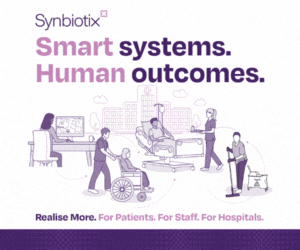The profile of mental health care is growing, fuelled by the actions and support of high profile individuals, including Princes William and Harry and accompanied by government pledges to do more to improve services. The Department of Health and Social Care included mental health care as one of the frontline NHS services to benefit from increased funding this year and issued a reminder of the key deliverables for 2018/19 from the health service. Pulse looks at the essentials for providing excellent care for mental health patients.
“When someone is in a mental health hospital they are likely to be at their most unwell and most vulnerable. They and their loved ones need to be able to trust that they will be kept safe and treated with dignity throughout the time they are in hospital. Aside from protecting people’s basic rights, being treated in a warm, caring and respectful way can make a huge difference to a person’s recovery. Services must do all they can to ensure they are providing safe and therapeutic care.” Sophie Corlett, Director of External Relations for mental health charity, Mind.
Unfortunately, stories of a system under pressure, which is failing mental health patients are as thick on the ground as pledges from the ‘powers that be’ to do more. An investigation by the Guardian published in March claimed that at least 271 highly vulnerable mental health patients died in the last six years after failings in NHS care. Coroners are reported to have issued legal warnings to 136 NHS bodies, mainly providers of care, between 2012 and 2017.
So where should we start with improving mental health care? Fundamental to the safety and security of patients and the quality of care is the physical infrastructure provided. The environment needs to be a calming space in which patients feel safe, are able to relax and feel comfortable.
Architect, Wendy de Silva, Mental Health Lead with IBI Group explains: "A therapeutic environment finds the right balance between calming and stimulation. In mental health environments this requirement does vary subtly between different groups of service users. There are also many commonalities; good connections to outside spaces, and good natural light have been shown to lower blood pressure and reduce the need for medication. Good observation improves safety and security. Good acoustics help create a calm atmosphere in day spaces and when paid proper attention to in corridors and bedrooms can improve sleep, a significant issue in mental health environments."
Good building design can also be enormously beneficial to staff effectiveness. A benefits realisation study done by the Trust at Woodland View - a 206 bed new build facility designed by the IBI Group - showed that the new ward environment, which has a wide range of positive therapeutic features combined with excellent observation, has resulted in a significant drop in the need for enhanced observations. This has enabled the Trust to reduce the number of staff required by 16, which is a very significant long-term revenue saving.
Flooring
Flooring is an important contributor to the atmosphere in a ward. To create a non-institutional atmosphere, both vinyl and carpets can be used. Demarcation of shared and personal space can be made by changing flooring, for example, to create thresholds at bedroom doorways.
However, de Silva cautions that great care should be taken not to confuse some patient groups. "People with dementia find changes in colour and pattern in flooring very challenging, sometimes perceiving shiny flooring as water or changes in colour as steps, we pay very careful attention to the tone and texture of flooring in these environments.”
Incorporating carpets and soft furnishings undoubtedly helps to create a warm and welcoming facility, conducive with healing and full of home-from-home comforts. Catherine Helliker, danfloor’s Marketing Manager says this can make a difference to what may otherwise be a sterile and sometimes unfamiliar and scary setting.
Former service user, Ian Callaghan, Recovery and Outcomes, comments from first hand experience: “Some carpeting would enormously improve an otherwise ‘cold’ environment. People like myself in secure units are there for often many years, and home comforts are few and far between. A carpet could therefore make a real difference.”
Because of this view, which is shared by many people who work within mental health and dementia friendly environments, and the research which is out there to support the use of carpet in such environments, the latest Health Building Note 03-02 Facilities for Child and Adolescent Mental Health Services (CAMHS) specifically refers to the use of carpet to create a therapeutic environment.
"Carpet may not be suitable for all locations of a mental health facility but in corridors, communal areas and bedrooms carpets can have a profound effect on a person’s recovery and wellbeing," says Catherine Helliker.
Carpets also help to improve the acoustics of a room by reducing impact noise. This relates to the control of sound from one space to another and helps to create the calm and peaceful environment essential for mental health facilities, which can be noisy places both day and night.
Furniture
Furniture sets the tone in any mental health ward. It needs to be robust and meet infection control guidelines, but can also be very homely and practical. At Woodland View, Wendy de Silva explains the interior design theme was influenced by the wild Scottish landscape surrounding the unit. It was extended to bespoke fabrics and finishes on the furniture.
IBI Group has developed several bedroom designs, which show the considerations in all these areas applied to the different patient groups.
Recent additions to the furniture range from Pineapple Contracts, a specialist in creating furniture for demanding environments, illustrate the particular needs of this sector. For instance, the design of the new Ryno Tub chair aims to solve problems facing users and staff.
It has a wraparound back support that doubles as an anti-roll design to stop the tub being used as a weapon. This wraparound design also creates a 'safe feeling' giving the user personal space and protection if vulnerable and helping to reduce conflict in areas that see challenging behaviours. There are no gaps or stashing opportunities and the continuous curved design makes it difficult to lift.
The new Scorpio Collapsible Mattress is designed to prevent windows and viewing panels being blocked to make visual inspections of rooms quicker and safer, thereby protecting both the user and staff.
The Scorpio Collapsible Mattress has a tri-fold design: two heat-welded seams have been ergonomically placed across the mattress, without compromising on the comfort of the user, so the mattress cannot hold itself upright to be used as a barrier or barricade.
The ability to spot any potential concerns earlier and easier reduces the number and scale of interventions necessary and minimises disruption to the positive and enhanced environment for users focused on rehabilitation.
Colour and art
“Colour is one of the most powerful healing tools,” says Wendy de Silva. “Colours can have both positive and negative effects on patients and it’s the understanding of these principles that allow us to create the most powerful healing environments. For example, apple green can relieve depression, but a patient receiving chemotherapy will feel sicker receiving treatment in a green room. Blue walls can reduce the perceived temperature of a room by several degrees.
“Art and sculpture also significantly impact people, instilling a sense of pride in a building. Within the healing environment artwork can lift the spirits, creating an interesting and motivating space for patients, staff and visitors. It can also be used in wayfinding to naturally orientate and navigate a building.
“We have developed effective wayfinding and art strategies and working alongside local artists and organisations we can develop creative solutions, to enhance the overall design. On recent projects we have incorporated light boxes, mobiles, sculpture installations, wallpaper and carpet designs into our overall design approach.
“Some people with mental health issues may have difficulty understanding their environment, so we provide multiple cues to aid orientation, including colour, texture, pictures, graphics, text and sound.”
Catering
Often discussion of the catering provision in mental health facilities is centred on the food itself and how it is served. Wendy de Silva, however, focuses on the needs of different patient groups from the dining environment itself. “For people with eating disorders, mealtimes are extremely stressful. The dining environment needs to be as relaxing as possible with plenty of table space available for nurses to sit with patients and supervise them as discreetly and supportively as possible.
“Appetite suppression, due to the patient’s medication or condition is a significant issue for other service users. The location of cooking/reheating facilities and aromas of food help to stimulate appetites, something that is particularly important for people with dementia or cognitive impairment who have lost a good sense of time.”
Access to hot water for service users to make their own hot drinks can also be a significant issue. On some wards IBI Group has incorporated tea and coffee making facilities in the main day spaces rather than ward pantries, which enables service users to help themselves to hot beverages at all times. The location and access to hot and cold water points (often ZIP taps) needs to be risk assessed because hot water can be used as a weapon. On higher risk wards, beverage points in day spaces are located in lockable roller shuttered cupboards so staff can exercise local control when necessary.
A different sort of tweet
In response to a request from the Central & North West London Dementia Friendly Committee, Specialist Alarm Services (SAS) has developed a unique sound for its nurse call system. A ‘bird chirping’ feature has been introduced instead of the 'beep, beep' tones historically generated by nurse call systems, which were felt to be institutionalised and alarming to patients and service users. The ‘bird chirping’ tone is discreet, but still easily recognisable by staff. The feature has now been rolled out across several sites in London with additional sites to follow during 2018.












